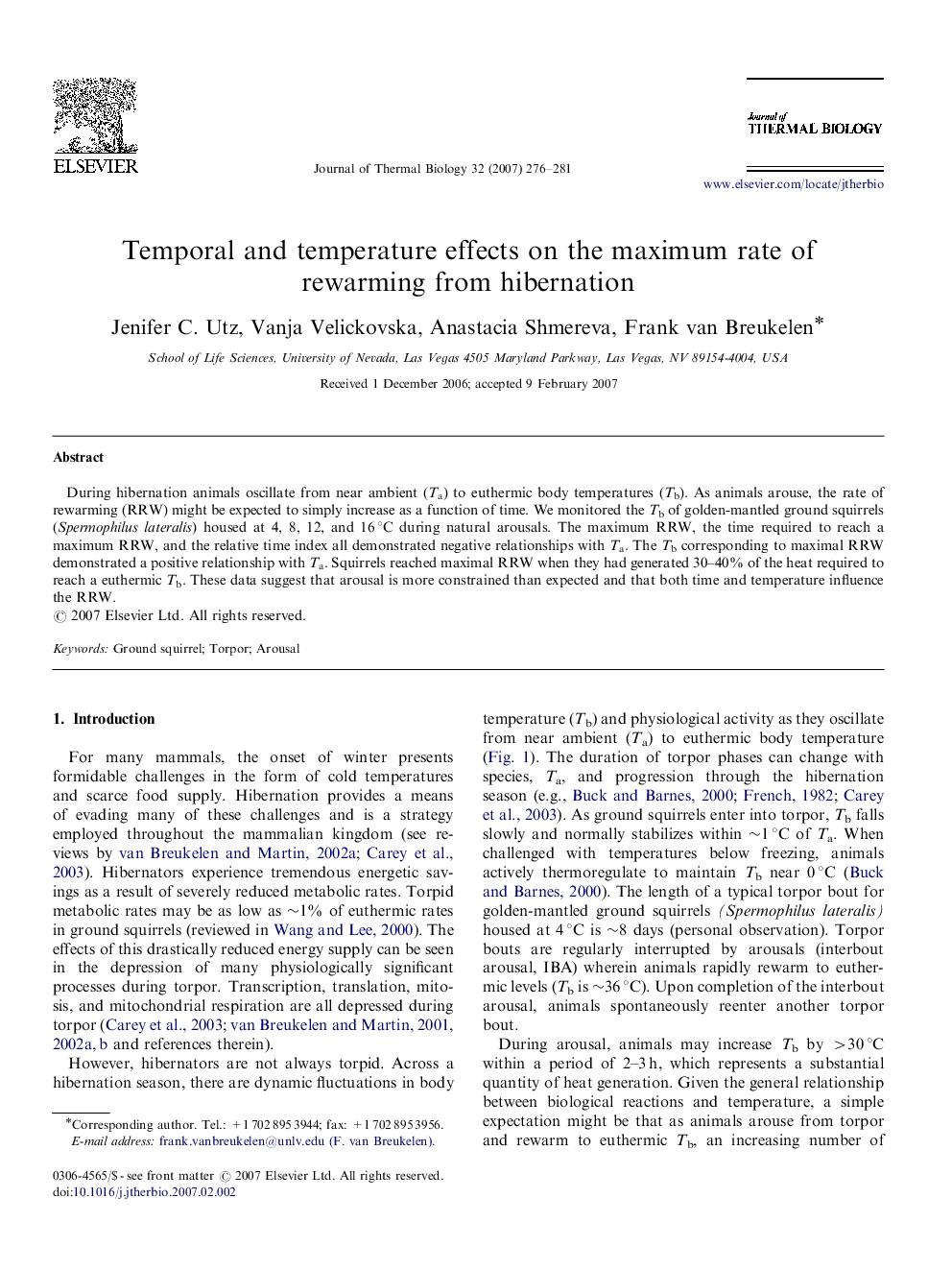| Article ID | Journal | Published Year | Pages | File Type |
|---|---|---|---|---|
| 2843792 | Journal of Thermal Biology | 2007 | 6 Pages |
Abstract
During hibernation animals oscillate from near ambient (Ta) to euthermic body temperatures (Tb). As animals arouse, the rate of rewarming (RRW) might be expected to simply increase as a function of time. We monitored the Tb of golden-mantled ground squirrels (Spermophilus lateralis) housed at 4, 8, 12, and 16 °C during natural arousals. The maximum RRW, the time required to reach a maximum RRW, and the relative time index all demonstrated negative relationships with Ta. The Tb corresponding to maximal RRW demonstrated a positive relationship with Ta. Squirrels reached maximal RRW when they had generated 30-40% of the heat required to reach a euthermic Tb. These data suggest that arousal is more constrained than expected and that both time and temperature influence the RRW.
Keywords
Related Topics
Life Sciences
Agricultural and Biological Sciences
Agricultural and Biological Sciences (General)
Authors
Jenifer C. Utz, Vanja Velickovska, Anastacia Shmereva, Frank van Breukelen,
